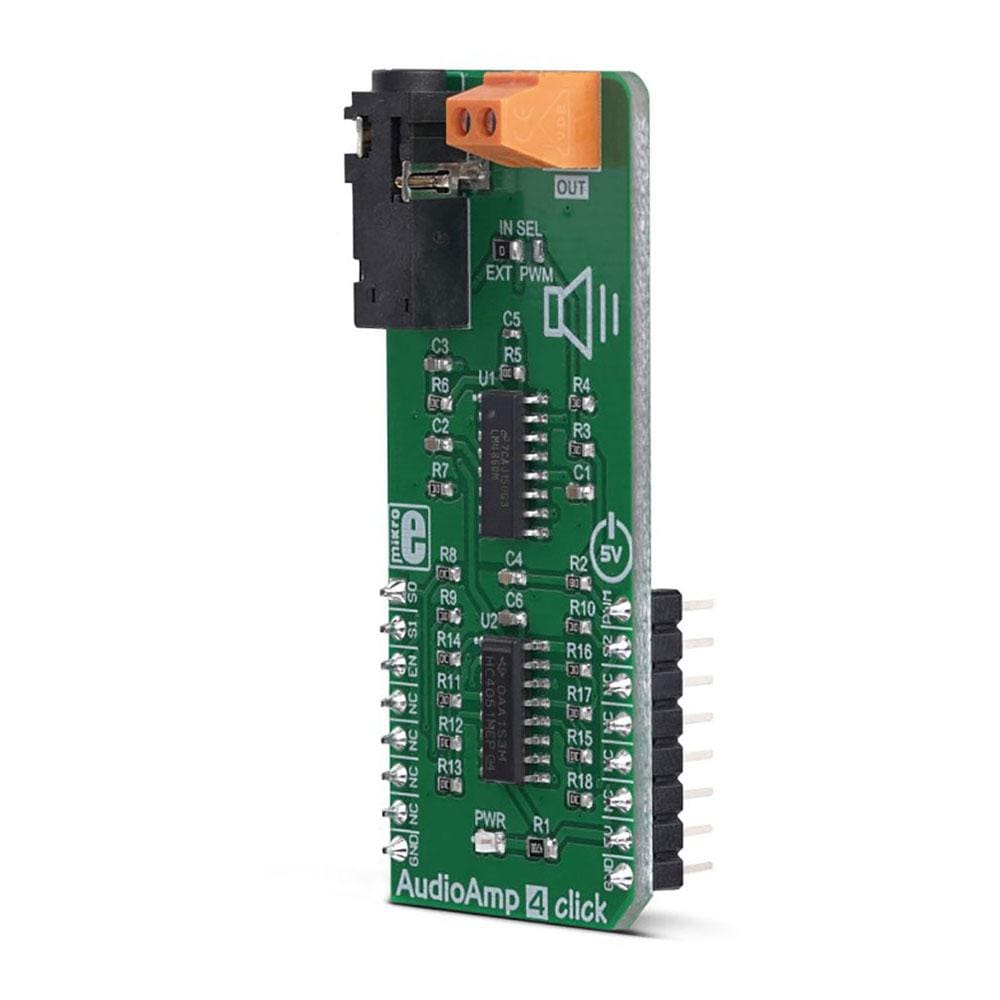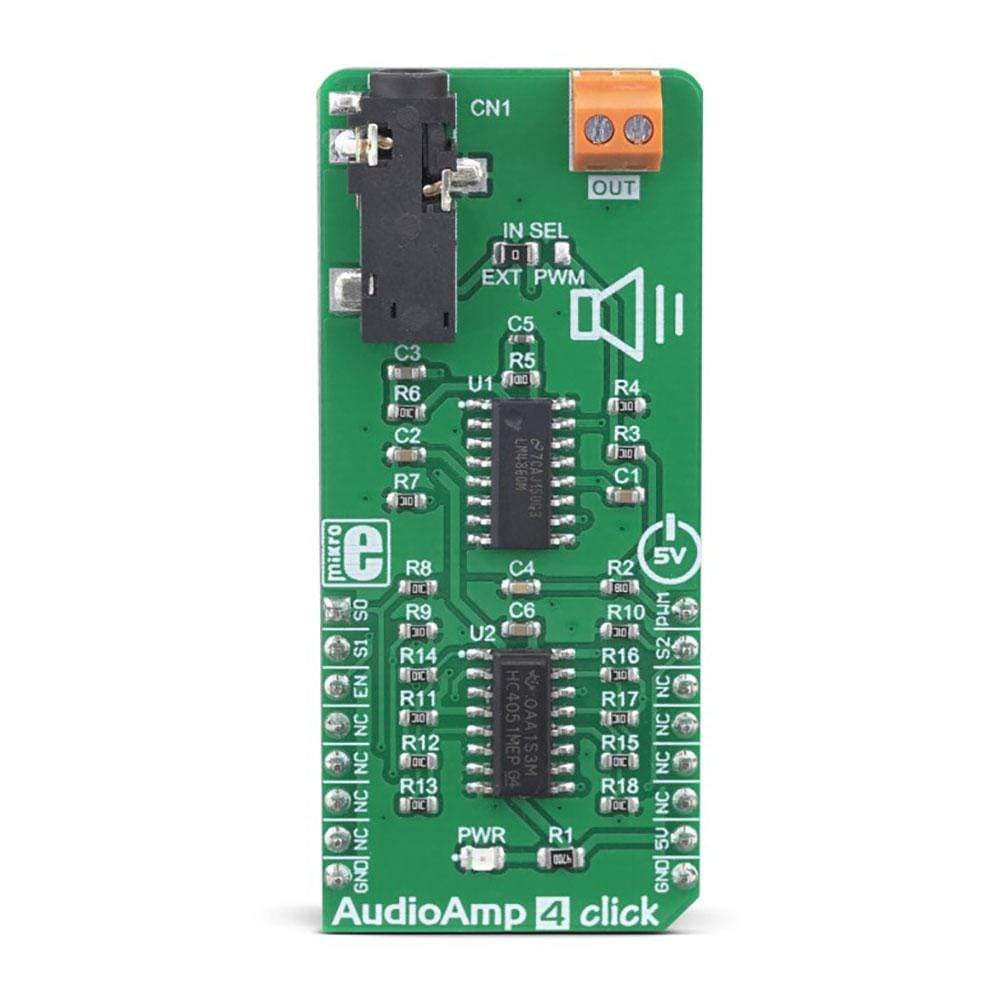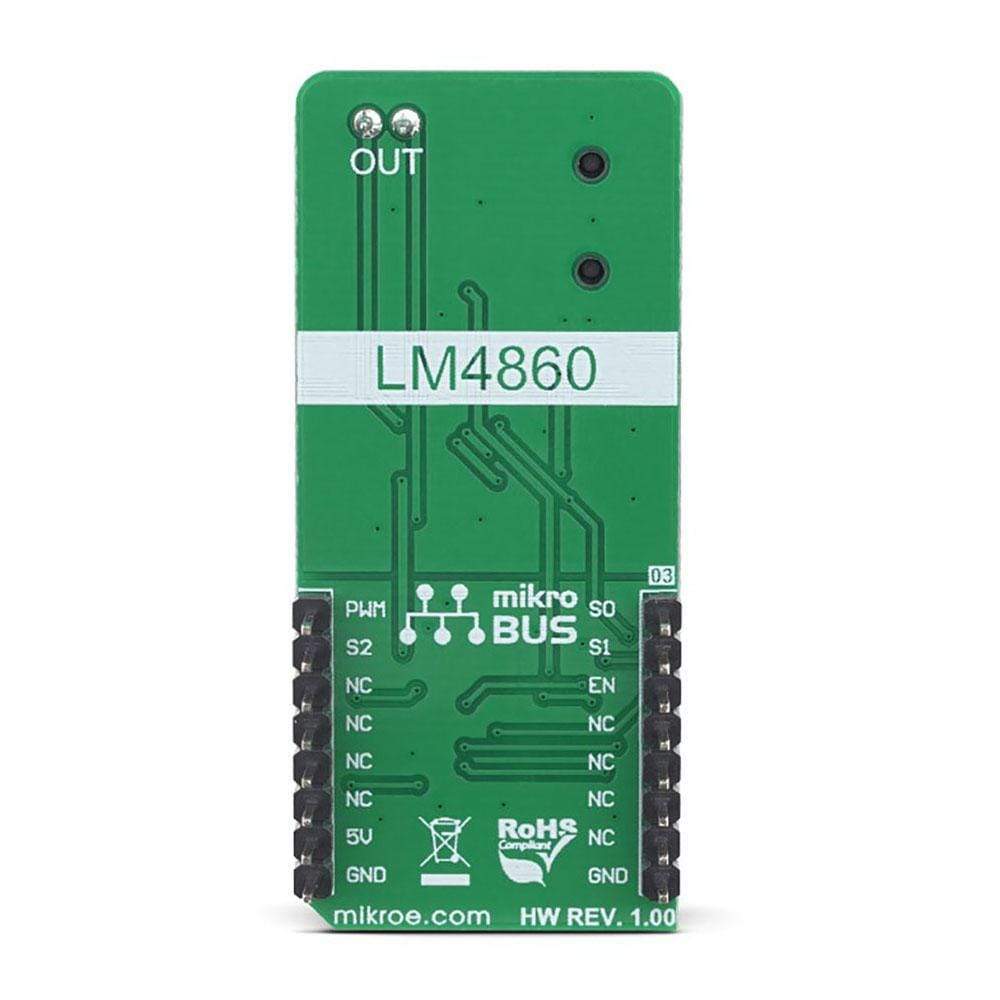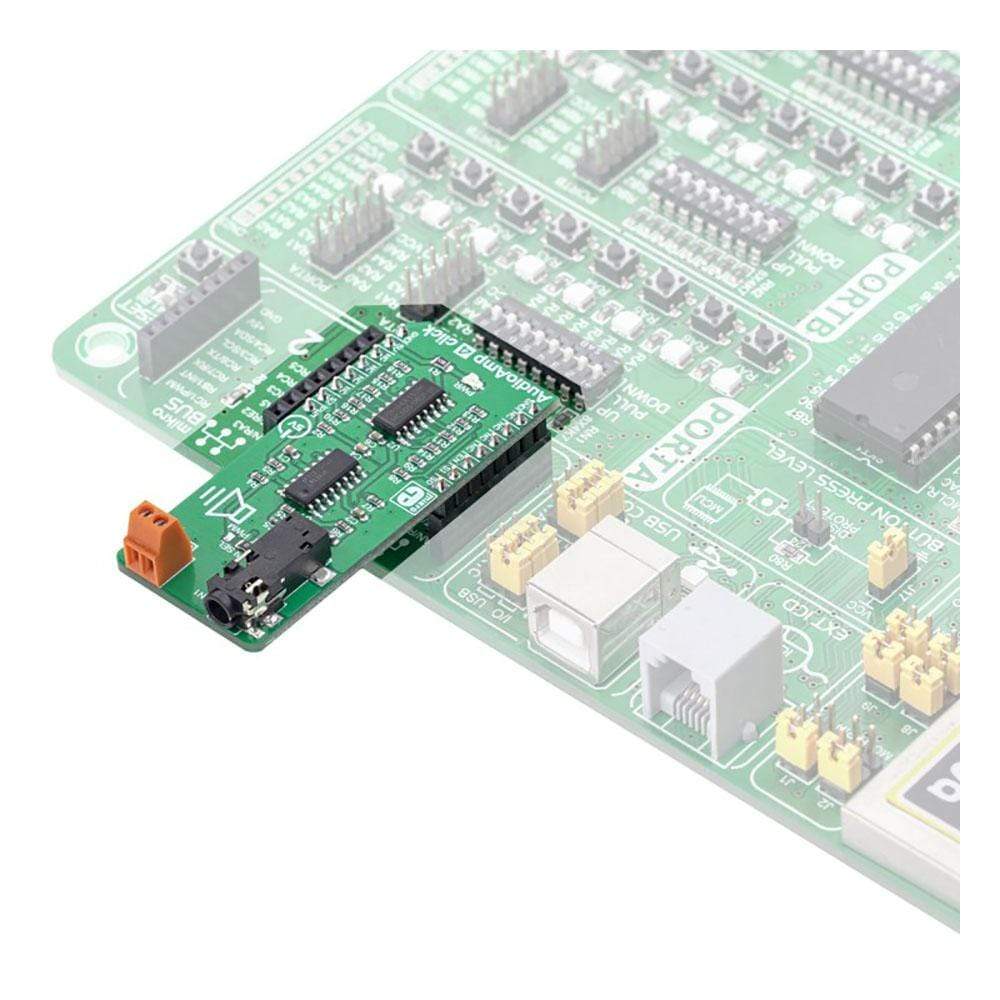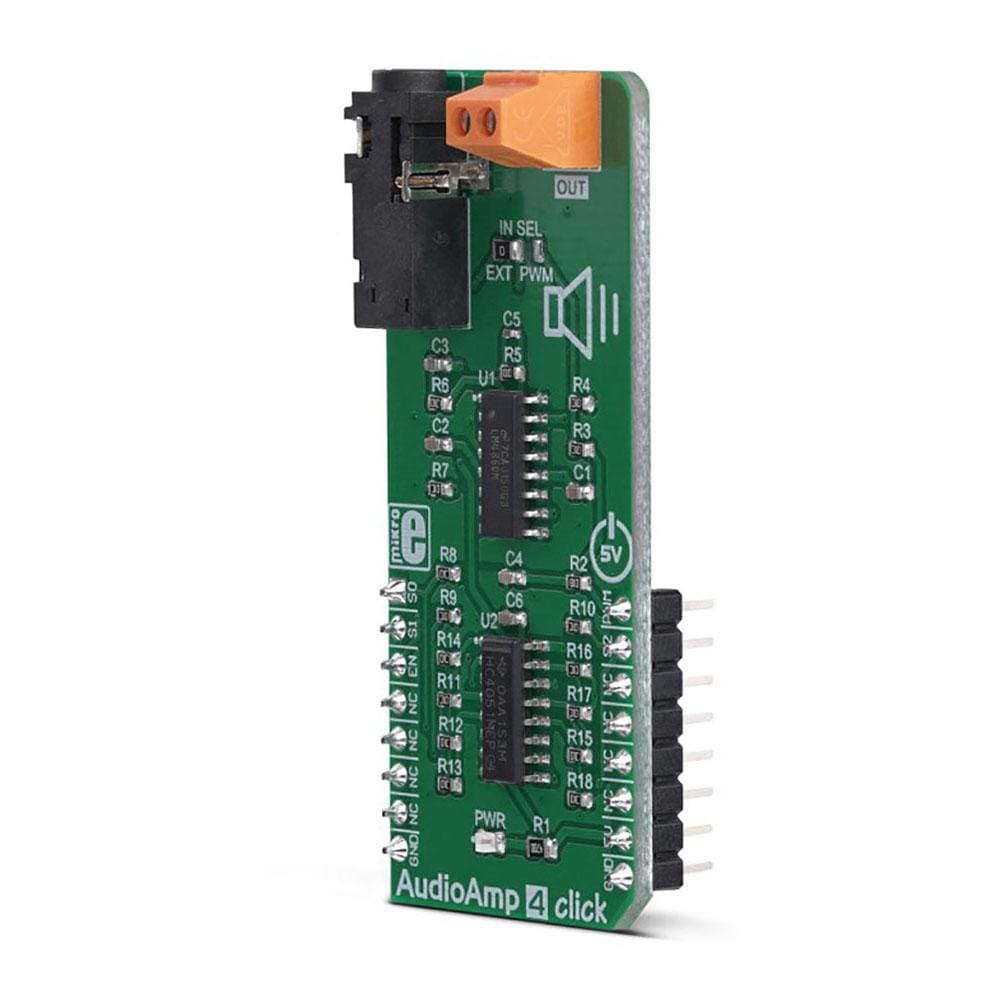
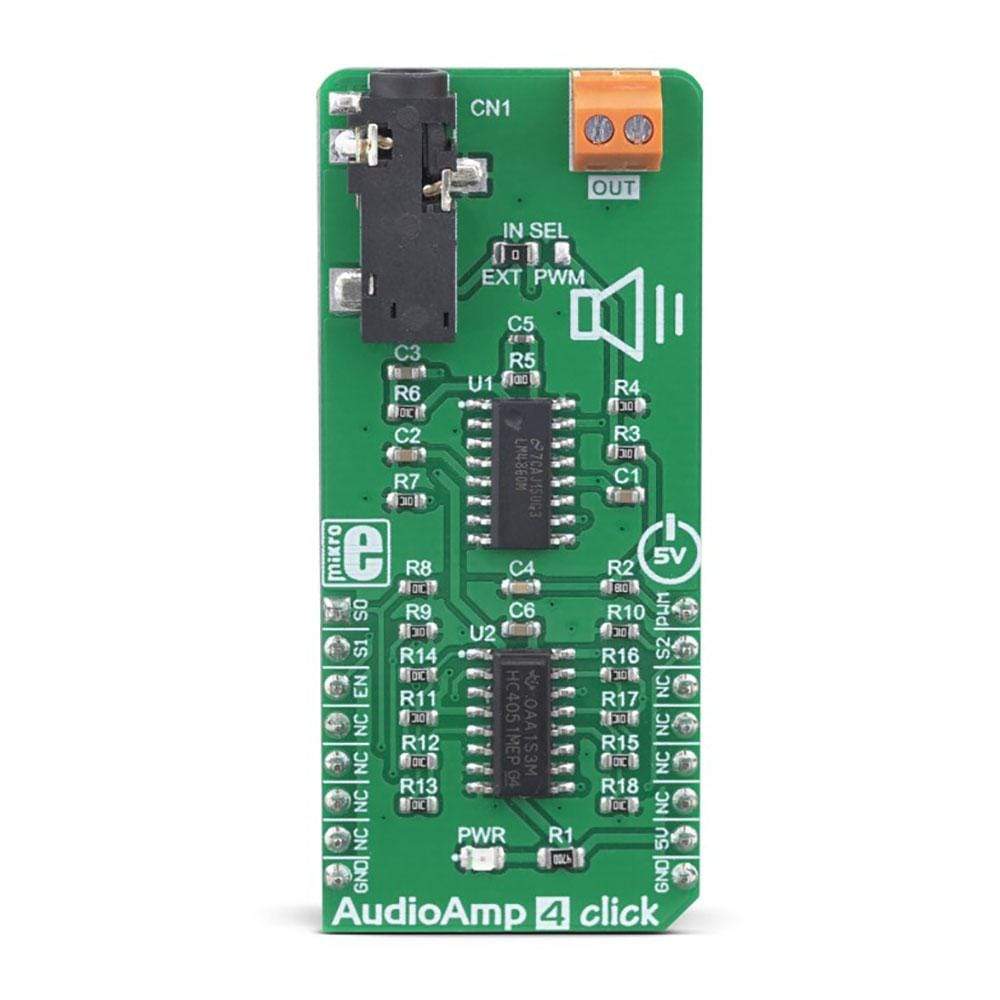
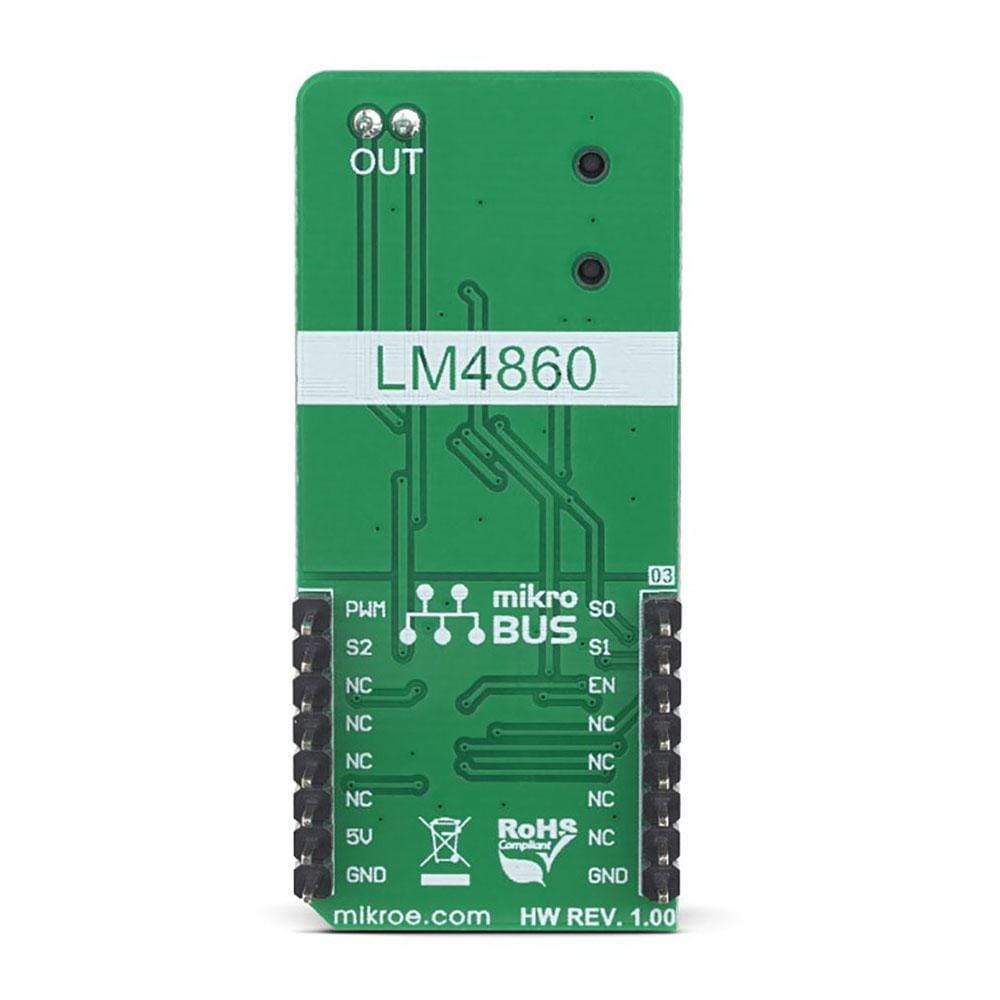
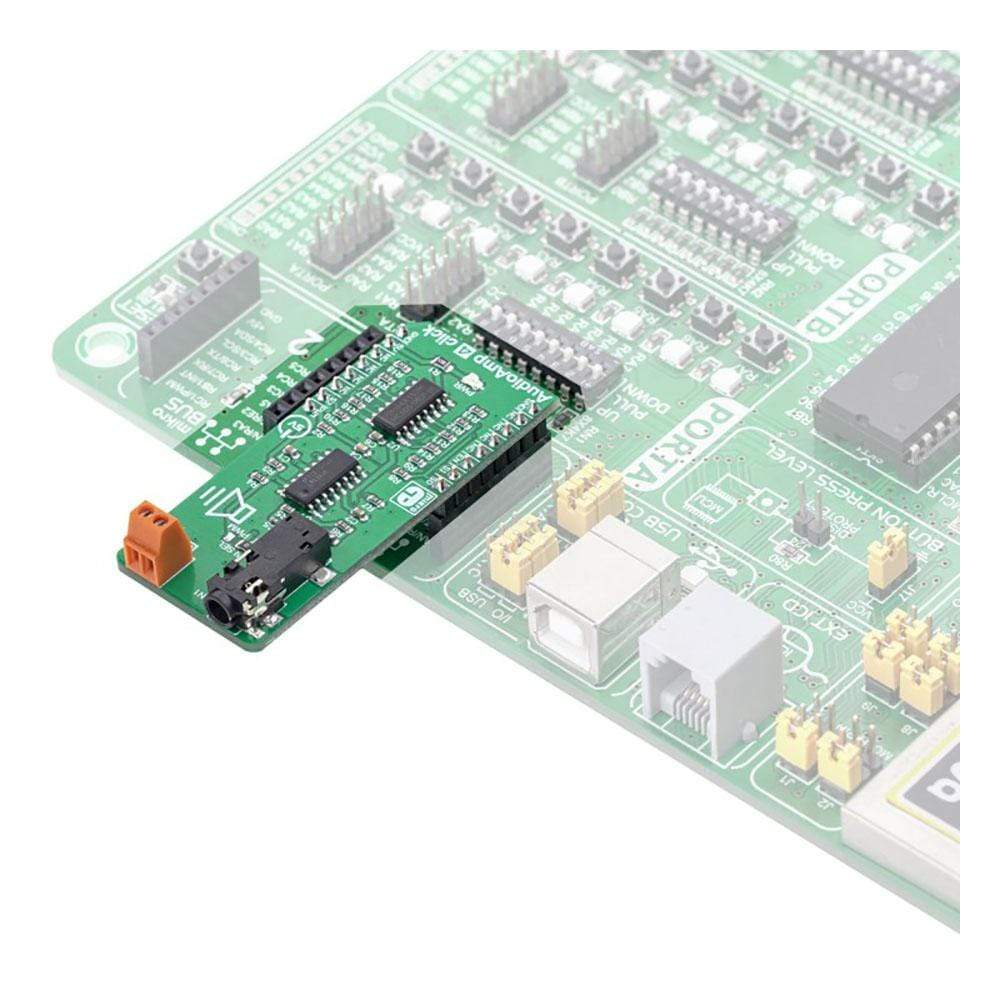
Key Features
Overview
The AudioAmp 4 Click Board™ is a low-power audio amplifier with a digital volume control. It is equipped with the LM4860, an audio amplifier IC capable of delivering up to 1W of continuous power to an 8Ω load. It has a very low total harmonic distortion (THD) of less than 1% over the entire audio spectrum, which makes it perfectly suited for small boom-boxes, PC speakers, and similar low-power sound reinforcing devices that can be powered by batteries. A high integration level of the LM4860 IC allows an additional circuit for digital signal attenuation to be used, offering 8 different volume levels, selectable over 3 GPIO pins of the mikroBUS.
The AudioAmp 4 Click Board™ is supported by the mikroSDK compliant library, which includes functions that simplify software development. The Click Board™ comes as a fully tested product, ready to be used on a system equipped with the mikroBUS slot.
Downloads
Das AudioAmp 4 Click Board™ ist ein Audioverstärker mit niedrigem Stromverbrauch und digitaler Lautstärkeregelung. Es ist mit dem LM4860 ausgestattet, einem Audioverstärker-IC, der bis zu 1 W Dauerleistung an eine 8-Ω-Last liefern kann. Es hat eine sehr geringe Gesamtklirrfaktor (THD) von weniger als 1 % über das gesamte Audiospektrum, wodurch es perfekt für kleine Boomboxen, PC-Lautsprecher und ähnliche stromsparende Tonverstärkungsgeräte geeignet ist, die mit Batterien betrieben werden können. Ein hoher Integrationsgrad des LM4860-IC ermöglicht die Verwendung einer zusätzlichen Schaltung zur digitalen Signaldämpfung und bietet 8 verschiedene Lautstärkepegel, die über 3 GPIO-Pins des MikroBUS ausgewählt werden können.
Das AudioAmp 4 Click Board™ wird von der mikroSDK-kompatiblen Bibliothek unterstützt, die Funktionen enthält, die die Softwareentwicklung vereinfachen. Das Click Board™ wird als vollständig getestetes Produkt geliefert und ist bereit für den Einsatz auf einem System mit MikroBUS-Steckplatz.
| General Information | |
|---|---|
Part Number (SKU) |
MIKROE-3271
|
Manufacturer |
|
| Physical and Mechanical | |
Weight |
0.022 kg
|
| Other | |
Country of Origin |
|
HS Code Customs Tariff code
|
|
EAN |
8606018713981
|
Warranty |
|
Frequently Asked Questions
Have a Question?
Be the first to ask a question about this.

